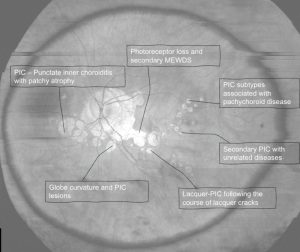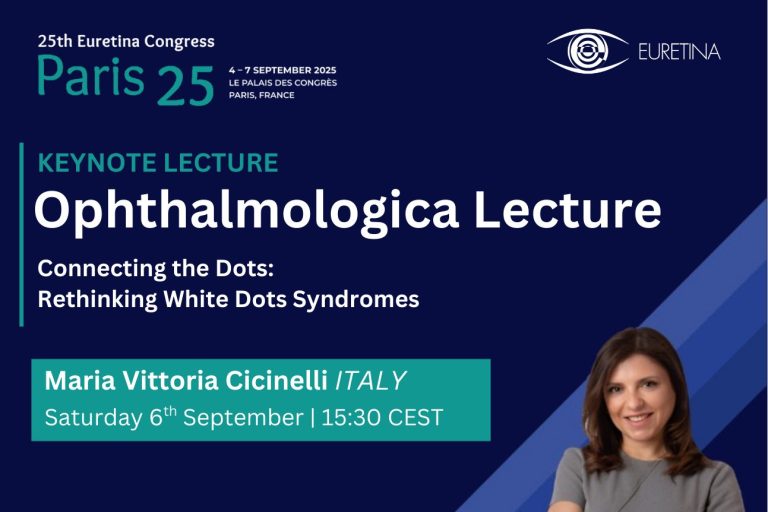Ophthalmologica Award lecturer will present new insights on white dot syndromes.
Traditionally, the entities that fall under the umbrella of white dot syndromes have been considered as distinct, unrelated diseases. However, growing evidence suggests that these inflammatory chorioretinopathies may represent diverse manifestations of a shared underlying process.
In the YOURS Ophthalmologica Lecture, Maria Vittoria Cicinelli, MD, FEBO, Università Vita-Salute San Raffaele, Milan, Italy, will focus on punctate inner choroiditis (PIC) and guide the audience through its clinical and imaging features. Her presentation will support the concept that PIC reflects a spectrum of the same inflammatory response, modulated by individual anatomical characteristics and predisposing factors.
Dr. Cicinelli will begin by presenting a classic case of PIC with patchy chorioretinal atrophy. “We’ll then explore what happens beyond the visible lesions — in particular, how photoreceptor loss can extend beyond what we see on fundus photography, sometimes triggering secondary inflammation that mimics multiple evanescent white dot syndrome,” she explained.
Then she will highlight atypical forms of PIC, such as those associated with pachychoroid disease features. In addition, Dr Cicinelli will discuss secondary forms of PIC in which similar lesions develop in the presence of diseases or conditions that are characterised by damage to the outer retina, such as trauma, angioid streaks, or inherited dystrophies.

The lecture will also introduce recent insights into why PIC lesions tend to develop in specific locations. In particular, Dr. Cicinelli will present the concept of “lacquer PIC,” where lesions align with lacquer cracks in pathologic myopia, prompting the question of whether this represents a distinct disease or a localised inflammatory response to mechanical stress.
The lecture will conclude with Dr. Cicinelli presenting her latest research on how the eye’s shape — especially posterior pole curvature — may influence the location of inflammation.
The key message, Dr. Cicinelli emphasised, is that PIC lesions are linked by more than their appearance: shared mechanisms likely drive their development.
“Recognising these patterns is critical because it may help us better classify and manage these complex diseases,” she said.
Dr Cicinelli will deliver the YOURS Ophthalmologica Lecture at 15:30 on Saturday, 6 September 2025, in the Regency AB room.









